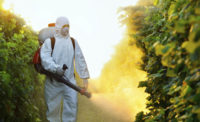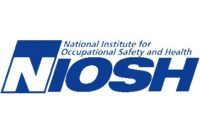Ag worker pesticide rule closer to being finalized

A tougher agricultural worker protection rule is inching closer to becoming a reality, now that the EPA has sent it to the Department of Agriculture for review.
The revised1992 Agricultural Worker Protection Standard – which increases requirements for certifying workers who apply dangerous, restricted-use pesticides to crops -- is intended to reduce the 1,800 to 3,000 pesticide exposure incidents reported each year (although the EPA notes that there is widespread underreporting). In addition to major exposure incidents, the EPA is concerned about low level, repeated exposure to pesticides that may contribute to chronic illness.
The new standards would require certifications to be renewed every three years as opposed to the current mandate of every five years and establish new training and licensing requirements. For the first time, the regulations would also set a minimum age requirement of 18 years old for people seeking certification. The proposed rule applies only to those chemicals that pose a high health risk, including the herbicide atrazine.
Also in the rule:
- Expanded training includes instructions to reduce take-home exposure from pesticides on work clothing and other safety topics.
- Expanded mandatory posting of no-entry signs for the most hazardous pesticides. The signs prohibit entry into pesticide-treated fields until residues decline to a safe level.
- New no-entry application-exclusion zones up to 100 feet surrounding pesticide application equipment will protect workers and others from exposure to pesticide overspray.
- Requirement to provide more than one way for farmworkers and their representatives to gain access to pesticide application information and safety data sheets – centrally-posted, or by requesting records.
- Mandatory record-keeping to improve states’ ability to follow up on pesticide violations and enforce compliance. Records of application-specific pesticide information, as well as farmworker training, must be kept for two years.
- Anti-retaliation provisions are comparable to Department of Labor’s (DOL).
- Changes in personal protective equipment will be consistent with DOL’s standards for ensuring respirators are effective, including fit test, medical evaluation and training.
- Specific amounts of water to be used for routine washing, emergency eye flushing and other decontamination, including eye wash systems for handlers at pesticide mixing/loading sites.
Farm owners and their immediate families would continue to be exempt from the rule.
After the USDA evaluation, the measure will be sent to the White House for a final review.
Read the comparison chart of the current WPS and the new revisions.
Read the comparison chart of the current WPS and revised rule (Spanish).
What types of activities are covered?
The regulation seeks to protect and reduce the risks of injury or illness resulting from agricultural workers’ (those who perform hand-labor tasks in pesticide-treated crops, such as harvesting, thinning, pruning) and pesticide handlers’ (those who mix, load and apply pesticides) use and contact with pesticides on farms, forests, nurseries and greenhouses. The regulation does not cover persons working with livestock.
When will these changes take place?
The majority of the rule revisions will be effective on January 2, 2017. This will give farmers and states time to adjust to the new requirements, as well as time for EPA and states to develop updated materials for training and other purposes.
Looking for a reprint of this article?
From high-res PDFs to custom plaques, order your copy today!






